Dr. Pepe’s Diploma Casebook: Case 3 – SOLVED!
Dear Friends,
Moving forward on our journey through the systems, our next stop is the heart. I want to put your diagnostic skills to the test with the following cardiac case.
Our patient is a 60-year-old male with dyspnea and fatigability.
Diagnosis:
1. Pulmonary hypertension
2. Pulmonary valvular stenosis
3. Left-to-right shunt
4. None of the above
Findings: Chest radiograph reveals enlargement of the pulmonary vasculature and the central pulmonary arteries (arrows)
- Pulmonary hypertension is a cause of central pulmonary arteries enlargement but with tapering of peripheral vessels
- Valvular pulmonary stenosis may cause enlargement of the central pulmonary arteries but not produce dilatation of peripheral vessels
- In a left- to-right shunt, the central and pulmonary vessels are homogeneously enlarged due to increased flow so the most likely diagnosis is left-to-right shunt
Diagnosis is confirmed by MR Axial ECG-gated cine-MR images which show:
- A defect communicating the right atrium-superior vena cava junction with the left atrium (green arrow)
- Enlargement of right-sided chambers (red arrows) and pulmonary arteries (yellow arrow) due to volume overload
- FINAL DIAGNOSIS: Superior sinus venosus atrial septal defect
Atrial septal defect is the most common left-to-right shunt detected in adulthood. It can be due to ostium primum, ostium secundum, sinus venosus and unroofed coronary. Ostium secundum is the most common type of ASD (Fig. 5), followed by ostium primum.
Fig 5: 37-year-old woman with a two month history of angina of effort. MRI shows direct communication between the two atria located at the fossa ovalis region (arrow) due to ostium secundum atrial septal defect.
Sinus venosus defects account for 5–10% of all atrial septal defects. The superior sinus venous is more common than the inferior one (Fig. 6).
Fig. 6: 62-year-old woman with dyspnea. MRI shows a defect communicating the right atrium-inferior vena cava junction with the left atrium (green arrow) and enlargement of right ventricle (red arrows) due to inferior sinus venosus atrial septal defect.
Left-to-right shunts.
Velocity-encoded phase-contrast (VEC) MRI in ascending aorta and pulmonary artery is used to quantify the ratio pulmonary to systemic flow: Qp/Qs.
Qp/Qs is the hallmark for defining the indication for surgical correction of left-to-right shunts.
Follow Dr. Pepe’s advice:
- Cardiovascular shunts can be suspected in chest radiography and confirmed by MRI.
- Ostium secundum is the most common type of atrial septal defect
- The severity of the shunt can be calculated by MR flow measurements within the pulmonary artery (Qp) and ascending aorta (Qs) and expressed as the Qp/Qs ratio
Suggested reading:
- Babar JL, Jones RG, Hudsmith L, Steeds R, Guest P. Application of MR imaging in assessment and follow-up of congenital heart disease in adults. Radiographics. 2010;30:1145. PMID: 20442335
- Rajiah P, Kanne JP. Cardiac MRI: Part 1, cardiovascular shunts. AJR Am J Roentgenol. 2011;197:W603-20. PMID: 21940532
Case prepared by Rafaela Soler MD


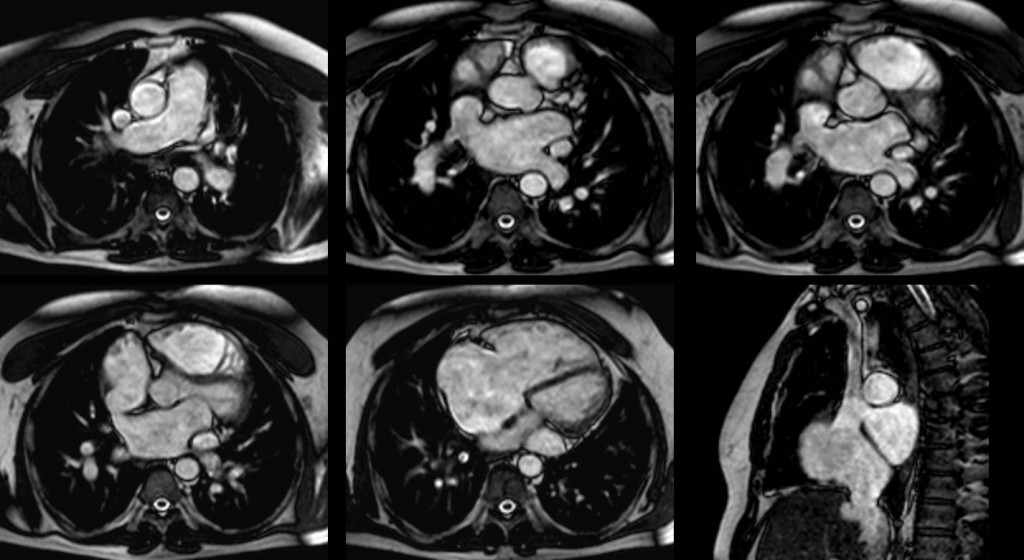
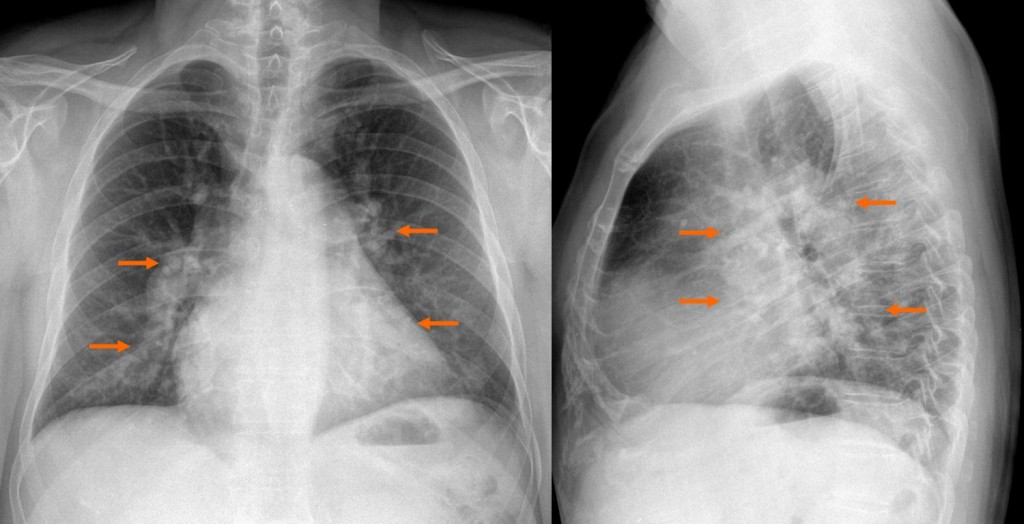
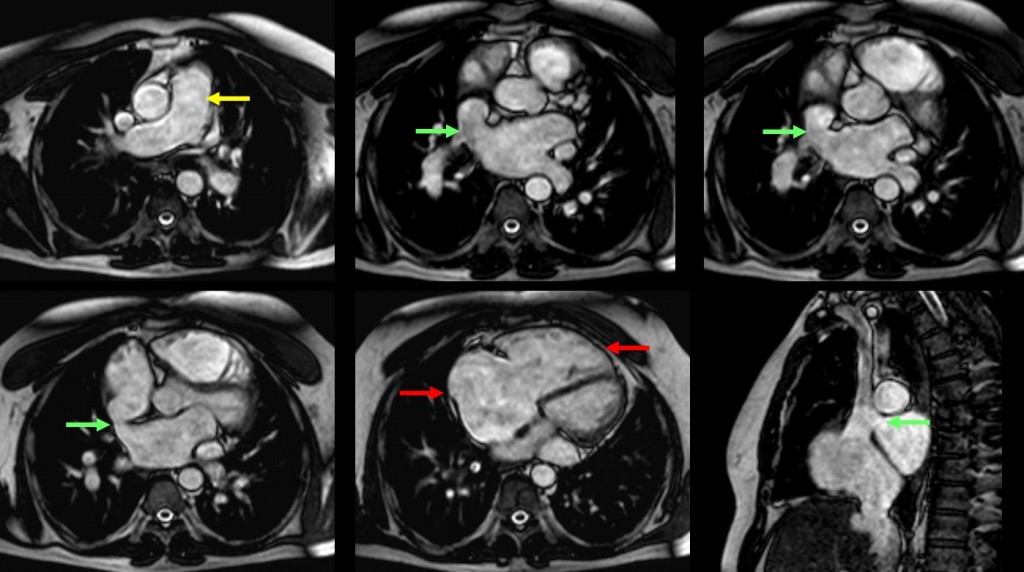
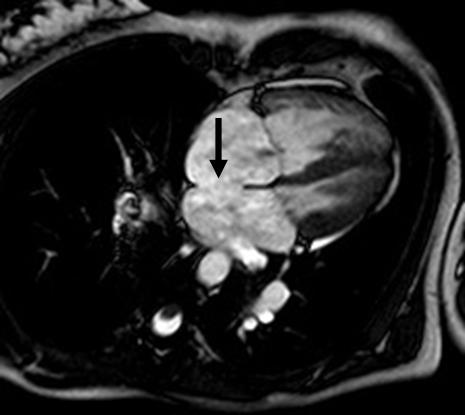

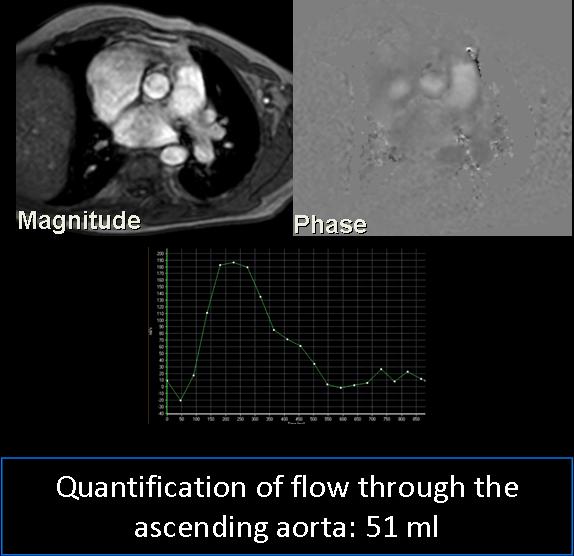




. Left-to-right shunt through interatrial communication
Left-to-right shunt with pulmonary hypertension.
Torace AP:segni di iperafflusso polmonare.TC: dilatazione del tronco polmonare e dell’atrio sx. Diagnosi: Shunt sx-dx( forame ovale pervio?).
Chest x-ray PA and lateral view shows dilated left and right pulmonary arteries with peripheral pruning and cardiomegaly. No evidence of pleural effusion /calcification of the pulmonary arteries or any opacity(suggesting infarct) is seen. Pulmonary veins are not dilated and no lung parenchymal disease is seen ruling out capillary and post capillary causes of pulmonary hypertension.From x-ray, features are sugegstive of pulmonary arterial hypertension -precapillary cause. Out of three common precapillary causes -Chronic left to right shunt,chronic pulmonary thromboembolism and idiopathic; MR images show evidence of defect between the SVC and left atrium(sagittal images)-suggesting sinus venosus type of ASD with right sided chamber enlargement. My diagnosis is Chronic sinus venosus type of ASD with pulmonary hypertension. In pulmonary valve stenosis only main and left pulmonary artery will be dilated because of jet stream phenomena;right pulmonary artery dilatation rules out pulmonary valve stenosis in this patient.
Excellent discussion. You are way above average.
X-ray shows bilateral hilar enlargement and cardiomegaly
MRI shows
-right chambers and left atrium growth
-pulmonary vessels enlargement
-communication between SCV and left atrium
Conclusion : Left-to-right shunt
Very good. You all are 100% correct. As you can see, taking the examination is easy!
LT to RT Shunt
in the paragraph above figure 5 , it is written ostium primum is most common type.
and at dr. pepe advice: its written ostium secundum.
I think there is a mistake.
Thank you. The text has been corrected.